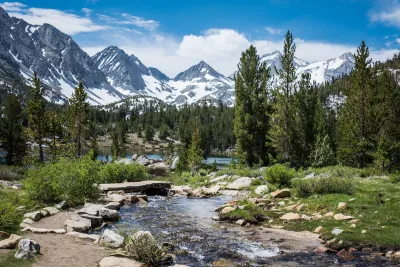Funds will be used to support water, wildfire prevention, environmental, and park projects, reflecting strong public support for climate resilience.

California voters have approved Proposition 4, a $10 billion bond measure focused on financing projects to bolster the state’s climate resilience and environmental health. This landmark measure dedicates $3.8 billion toward water initiatives, including efforts for safe drinking water, water recycling, groundwater storage, and flood management. Additionally, the bond sets aside $1.5 billion for wildfire prevention and $1.2 billion for protecting coastal areas from rising sea levels. The proposition also directs funds toward creating parks, wildlife habitat protection, air quality improvements, extreme heat mitigation, and support for sustainable agriculture.
As reported by Melody Petersen, the measure garnered significant support from environmental groups, social justice organizations, labor unions, and renewable energy industries, all of whom advocated for the bond as a critical investment in California’s future. Liz Forsburg Pardi, the California policy director at the Nature Conservancy, expressed gratitude for voter approval, stating it reflects a strong commitment to climate resilience. Proponents argue that these projects will help prevent the devastating impacts of environmental disasters like wildfires and erosion, which are predicted to worsen as climate change progresses.
While widely supported, the bond measure also faced opposition from taxpayer groups like the Howard Jarvis Taxpayers Association, which argued that funding these projects through bonds would ultimately cost the state more in interest payments. According to the Legislative Analyst’s Office, the bond will cost taxpayers $400 million annually over the next 40 years, totaling $16 billion. Critics contend that the state could have pursued more fiscally responsible funding alternatives, yet the measure’s passage indicates voters’ prioritization of environmental sustainability over concerns about debt.
FULL STORY: California voters approve Proposition 4, the bond measure for water and environmental projects

National Parks Layoffs Will Cause Communities to Lose Billions
Thousands of essential park workers were laid off this week, just before the busy spring break season.

Retro-silient?: America’s First “Eco-burb,” The Woodlands Turns 50
A master-planned community north of Houston offers lessons on green infrastructure and resilient design, but falls short of its founder’s lofty affordability and walkability goals.

Delivering for America Plan Will Downgrade Mail Service in at Least 49.5 Percent of Zip Codes
Republican and Democrat lawmakers criticize the plan for its disproportionate negative impact on rural communities.

Test News Post 1
This is a summary

Test News Headline 46
Test for the image on the front page.

Balancing Bombs and Butterflies: How the National Guard Protects a Rare Species
The National Guard at Fort Indiantown Gap uses GIS technology and land management strategies to balance military training with conservation efforts, ensuring the survival of the rare eastern regal fritillary butterfly.
Urban Design for Planners 1: Software Tools
This six-course series explores essential urban design concepts using open source software and equips planners with the tools they need to participate fully in the urban design process.
Planning for Universal Design
Learn the tools for implementing Universal Design in planning regulations.
EMC Planning Group, Inc.
Planetizen
Planetizen
Mpact (formerly Rail~Volution)
Great Falls Development Authority, Inc.
HUDs Office of Policy Development and Research
NYU Wagner Graduate School of Public Service




























